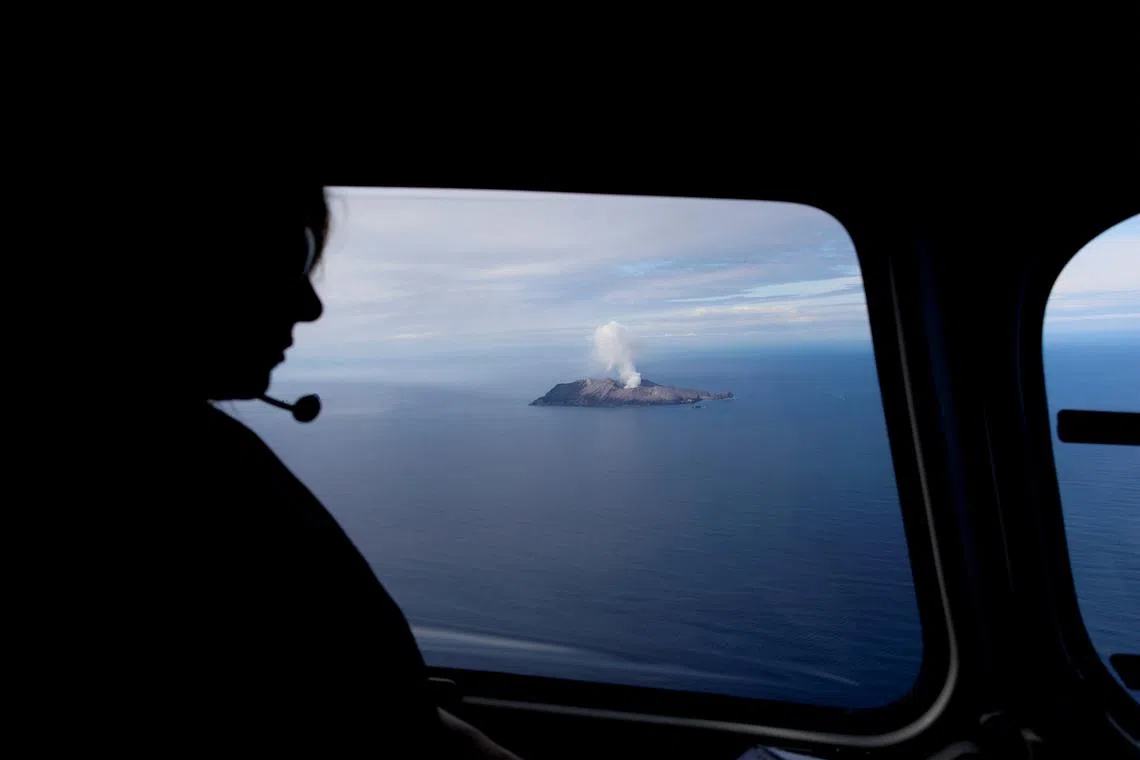Victims of 2019 New Zealand volcano disaster win $8.2m in damages
Sign up now: Get ST's newsletters delivered to your inbox

Since the eruption, no boat or aircraft tours have been allowed to land on the island.
PHOTO: REUTERS
Follow topic:
WELLINGTON – The victims and families affected by the 2019 New Zealand volcano disaster,
The sum must be paid by five companies that transported 47 tourists to the volcanic island on Dec 9, 2019, the day it erupted.
Many of the 25 survivors suffered terrible burns.
In addition to paying out reparations, the islands’ owners, Whakaari Management, along with White Island Tours and helicopter firm Volcanic Air Safaris, who ran tourist trips to the volcano, were fined.
GNS Science, which monitors New Zealand’s volcanos, was also ordered to pay a fine.
At Auckland District Court, Judge Evangelos Thomas said the total damages were “no more than a token recognition” of the victims’ suffering.
The group had been “physically, mentally and emotionally” traumatised by the disaster, he said, with many still bearing the physical scars.
“Your stories have been heartbreaking and inspiring, it has been a humbling privilege to hear them,” Mr Thomas told the victims in court.
He said the exact reparation amounts would be adjusted in some cases, especially in instances where victims had lost parents.
Each of the companies sentenced had failed in their duties to assess and mitigate risk, Mr Thomas added.
“That failure exposed others to risk of serious injury and death.”
Since the eruption, no boat or aircraft tours have been allowed to land on the island.
The eruption off the coast of the country’s North Island prompted a massive medical operation that saw victims treated in burns units across New Zealand and Australia.
Mr Thomas said many victims have seen their livelihoods affected by their injuries.
When the trial opened in July 2023,
Some stumbled in their desperation to flee.
The head of New Zealand’s health and safety regulator WorkSafe said the victim’s harrowing experiences showed the impact of the disaster was “far wider” than just affecting those on the island that day.
“Today belongs to the survivors, and the whanau (family) and friends of those who were harmed or lost their lives,” said WorkSafe chief executive Steve Haszard.
He described it as “one of the worst natural disasters” in New Zealand’s history.
All of the businesses that controlled the island, or transported tourists to it, had been convicted of safety failings, Mr Haszard added.
He said the disaster had forced significant changes in New Zealand.
“One impact has been to raise our national understanding about the obligations on businesses to do everything they can to keep people safe,” he said.
“This is a catastrophic example of what can go wrong when they don’t.” AFP

